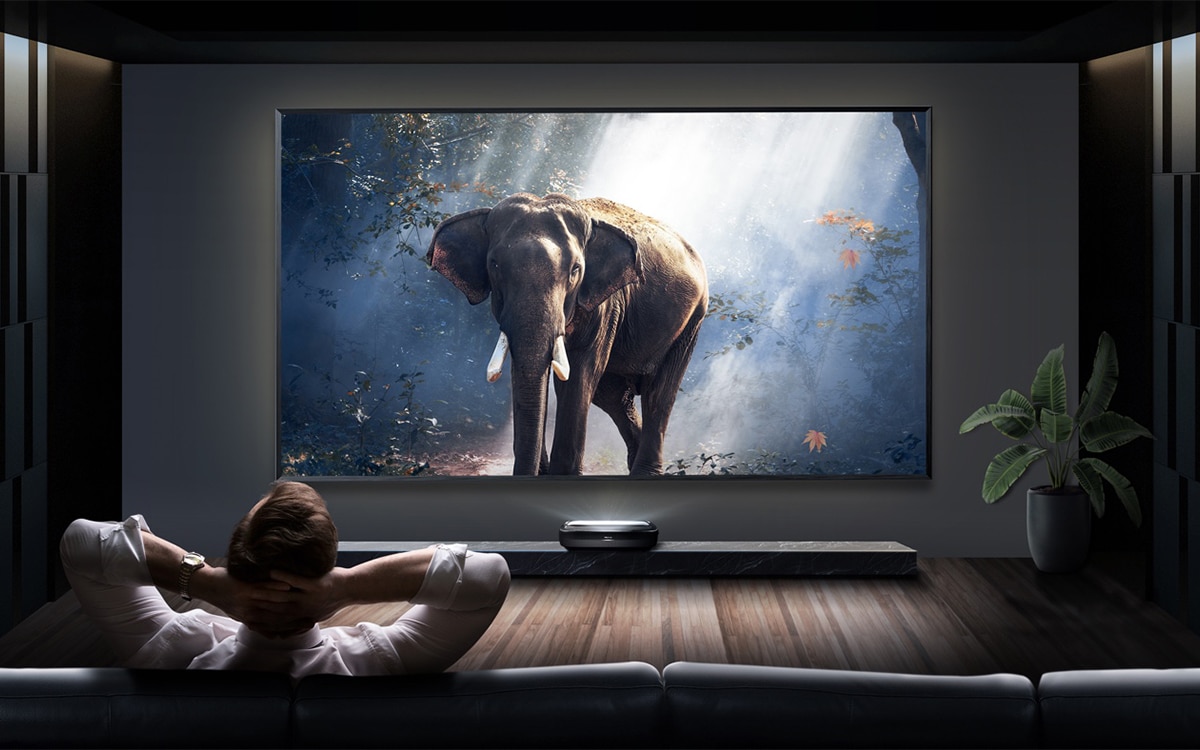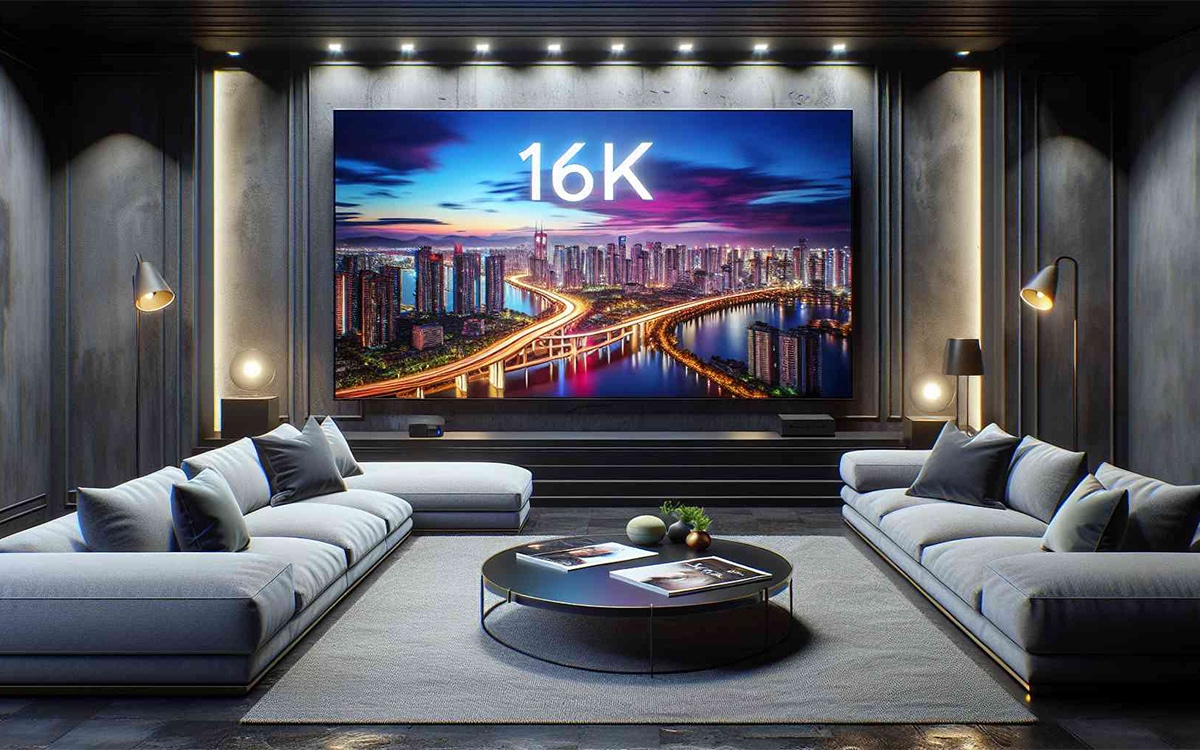But the existence of 8K tv displays naturally leads many to wonder whether there is such a thing as a 16K TV. Does the resolution exist? And when will we finally be able to grab 16K TVs for our own homes and what’s the difference between an 8K TV and 16K TV too?
Our Reliant tech experts have been there to witness every significant change to TV resolutions in the past decades. Using their wealth of knowledge, we’re going to try to glimpse into the future, to see if 16K TVs are a close reality or merely a pipe dream!
Will There Ever Be 16K TVs?
16K TVs actually already exist! Numerous manufacturers across the world have produced immense 16K TVs, with equally impressive screen sizes. For instance, in the Summer of 2023, Chinese manufacturer BOE showed off their own juggernaut 16K tv display. With 2 times the number of pixels as 8K TV displays, this TV is able to display images with total clarity. Images almost look totally real!
16K TVs already exist. They’re just not widely available on the mass market. So far 16K displays have only been shown off at specific events. It’s not clear when 16K TVs will be widely available.
However, despite being such an exciting advancement in home entertainment, 16K TVs have yet to enter the mass market. So far, their use has been limited almost entirely to trade shows and tech events. You wouldn’t be able to find a 16K TV by simply heading to a nearby shop.
When Will You Be Able To Buy A 16K TV?
As we mentioned above, 16K TVs are not currently available for general purchase. At the moment they are still very much a prototypical technology thus far only shown off at corporate events. There are not currently any signs that these displays will be entering the general market any time soon.
Currently, there’s very little need for 16K TVs to be available in the general market. Despite an 8K TV being visually superior to a 4K TV, they have yet to take over as the market leader. 4K TVs still sell far better than 8K TVs. A large reason for this is that there’s simply less of a need for 8K resolutions than 4K resolutions. There is very little content produced specifically with 8K resolutions in mind. Most films, TV shows, and games are released to target 4K TV resolutions.
Until 8K tv resolutions take over from 4K resolutions as the industry standard, there’s no practical need for a 16K TV resolution! When 8K TV content starts to be produced regularly, 8K TVs may take over as the most popular display type. However, at that point, 16K content will still be a while away.
What Kind Of Screen Size Would A 16K TV Need?
In order to enjoy 16K resolution at its best, you would need a screen with a larger size. For 8K resolutions, it’s best to have a TV with a screen size over 75 inches. At this size, there’s enough screen space to allow the image to spread out and look its best.
For a 16K resolution, you would preferably want a 98-inch TV. An 85-inch TV may do the job, but the image would need to be condensed to fit that screen size. Screen sizes over 98 inches would also be beneficial for 16K imagery. The only problem is, 98-inch TVs are currently the largest on the market. Not only would we need to wait for 16K resolutions to arrive, but also for TVs to become much larger in size!

Can A Person See The Difference Between 8K And 16K?
At this point, you might wonder whether the boosted resolution of a 16K display is actually worth it. In order to make out the difference between an 8K resolution and a 16K resolution, you would need a well-sized screen. When a 16K image is condensed onto a smaller screen, it’s a lot harder to spot the benefits that the resolution offers. On a 98-inch TV, it’s a lot easier to spot the benefits.
It’s totally possible to see the difference between an 8K and 16K resolution. However, in order to do so, you would need a TV with a much larger screen size. For some, this may be worth it!
If you were to compare an 8K and 16K image on a 98-inch TV, you would immediately notice how much clearer the 16K image appeared. This is thanks to the increased pixel count. With more space for the pixels to do their thing, it’s much easier to spot the visual benefits of a 16K TV.
Whether or not the increase in resolution from 8K to 16K is worth it is less certain. For some people, the increase in resolution would be incredibly valuable. For others, it would be totally unnecessary. If and when 16K TVs enter the market, they would be rather costly to purchase. This might put many people off of purchasing them for themselves.
Frequently Asked Questions
Will There Be A 16K TV?
16K TVs already exist, but they’re not available for purchase. 16K TVs have mostly only been shown off at press events. It’s unlikely that 16K TVs will enter the general market anytime soon. 8K TVs have yet to totally overtake 4K TVs as the market standard. There would be very little to make 16K TVs truly essential to general consumers.
Can You Buy A TV Too Big?
Absolutely. When a TV is too large, it becomes uncomfortable to watch it. Sitting too close to a TV will require you to move your head constantly just to get a sense of the full on-screen image. The larger a TV is, the farther away you must sit from it to take its image in!





